fall inside a hole
R-13 Single/Double Point Rail (1974)
| <-- R-12 Figure Eight Point Rail | R-14 Crossing Point Rail --> |
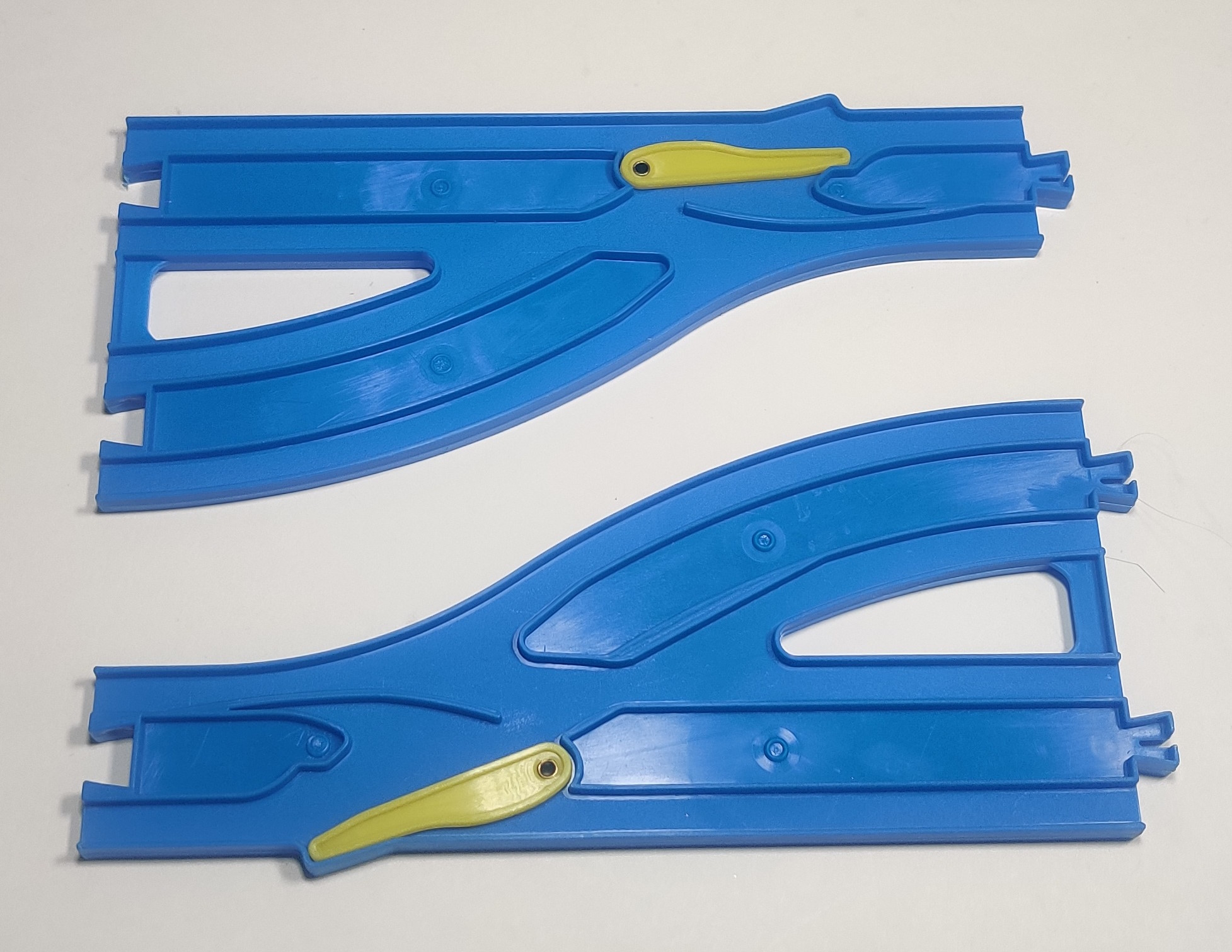
The Single/Double Point Rail (単・複ポイントレール) was first released in earlier 1974 just before the introduction of treaded rails. Very early examples are smooth and do not have the plastic "bridge" connecting the two branches. Rails were soon updated to have a roughtop pattern and a connecting bar was added to help keep the rail sitting flat and stay connected to regular double rail track pieces.
As the name suggests, these fit in with the dimensions of the Double Track standard first introduced in 1968 and still in use today. They were initially sold as number 42 under the earlier 70s numbering scheme and became R-13 Single/Double Point Rail (R-13 単・複ポイントレール, later R-13 単線・複線ポイントレール) around 1988. Like other mid 1970s points, these point rails come in two types "A" and "B", with A rails having a convex connector on the entrance of the switch and two concave connectors on the branches and B rails having a single concave connector with two convex ones.
Roughtop rails (later 1974-1990)

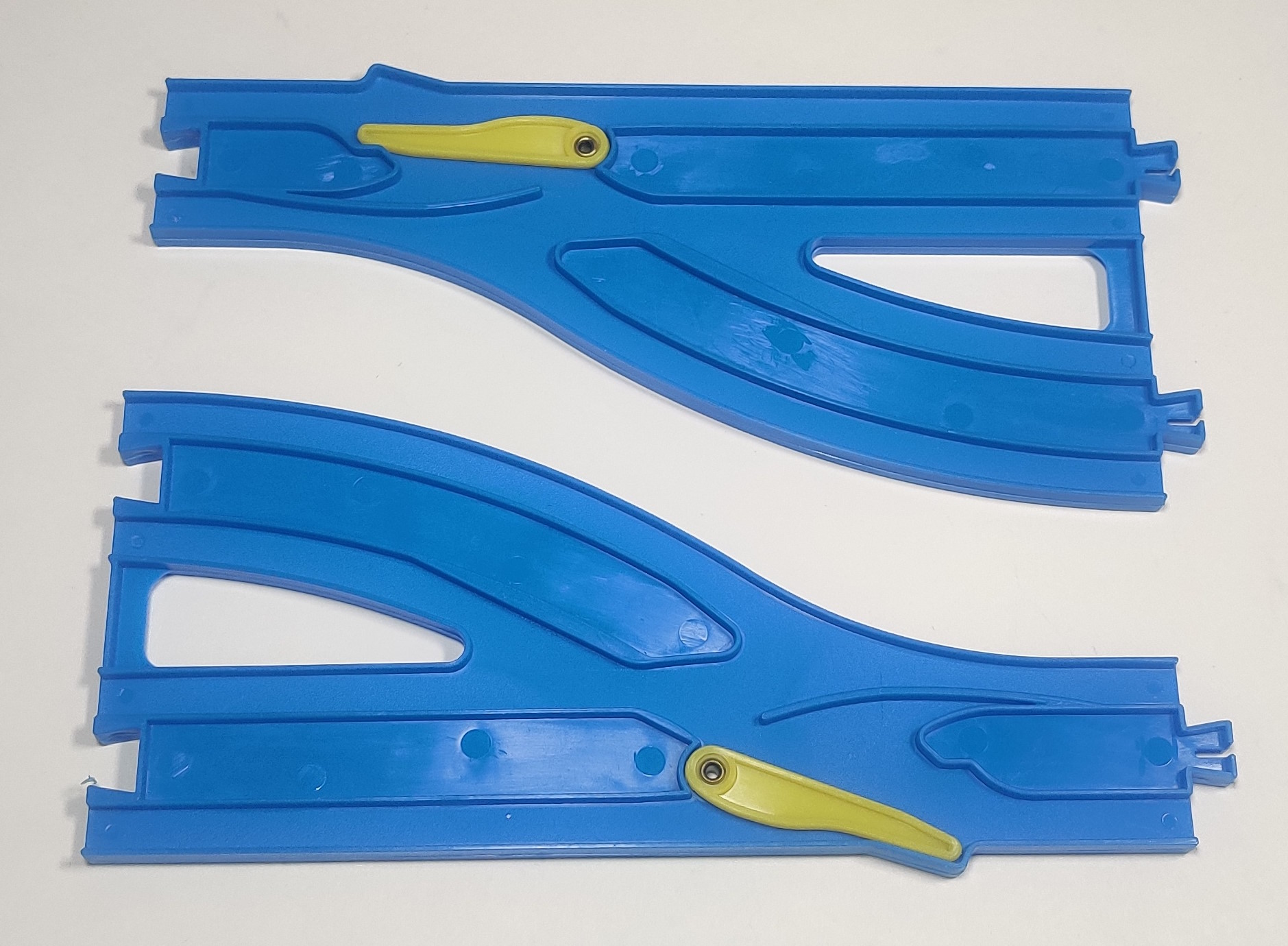
Early roughtop turnout rails do not have any Tomy or Japan markings. The yellow directional-changing lever is a more translucent plastic. Unlike the R-11 Turnout Rail and some other switches the directional changer is made up of two different pieces that are loosely riveted to the rail itself.
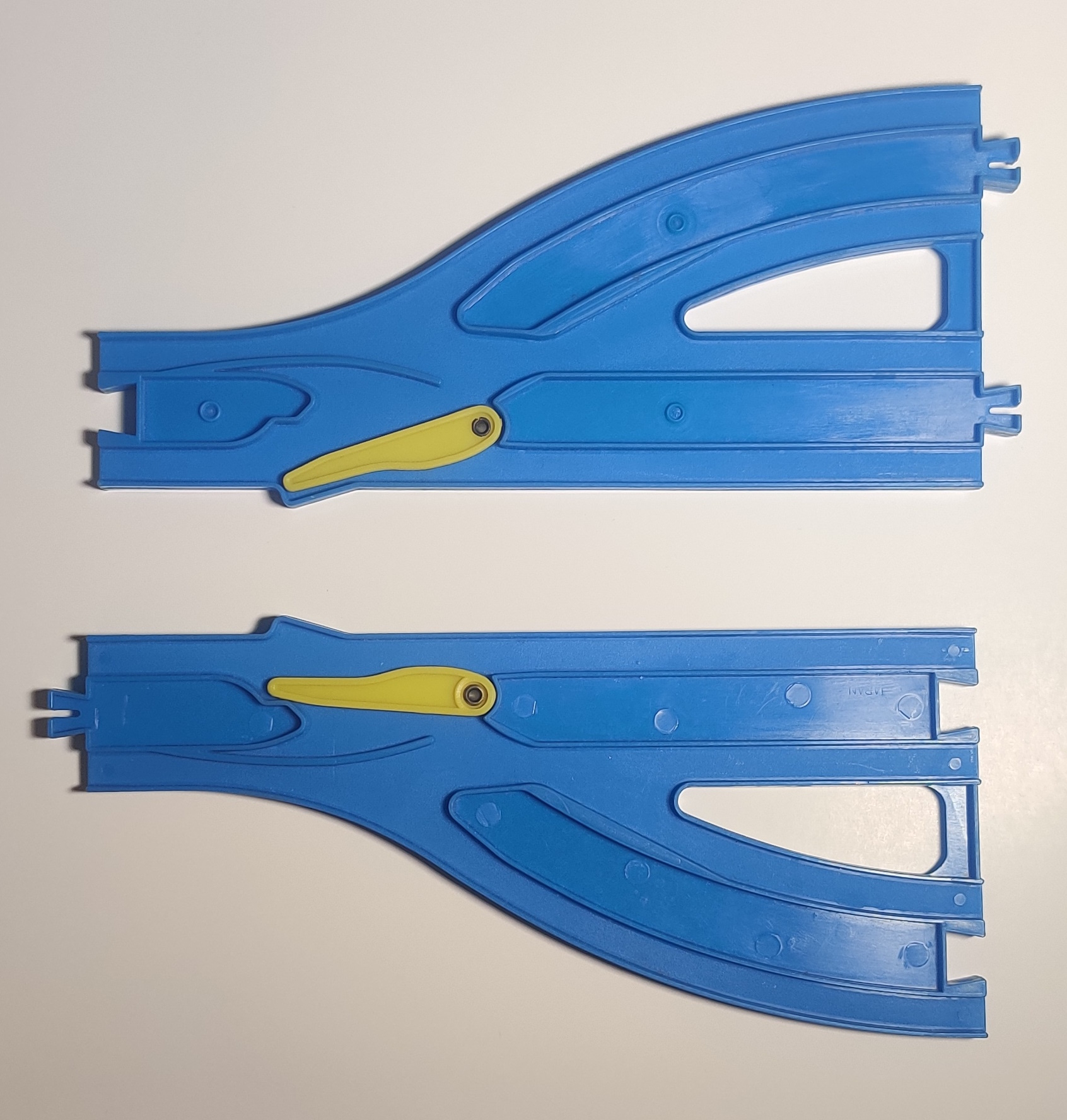
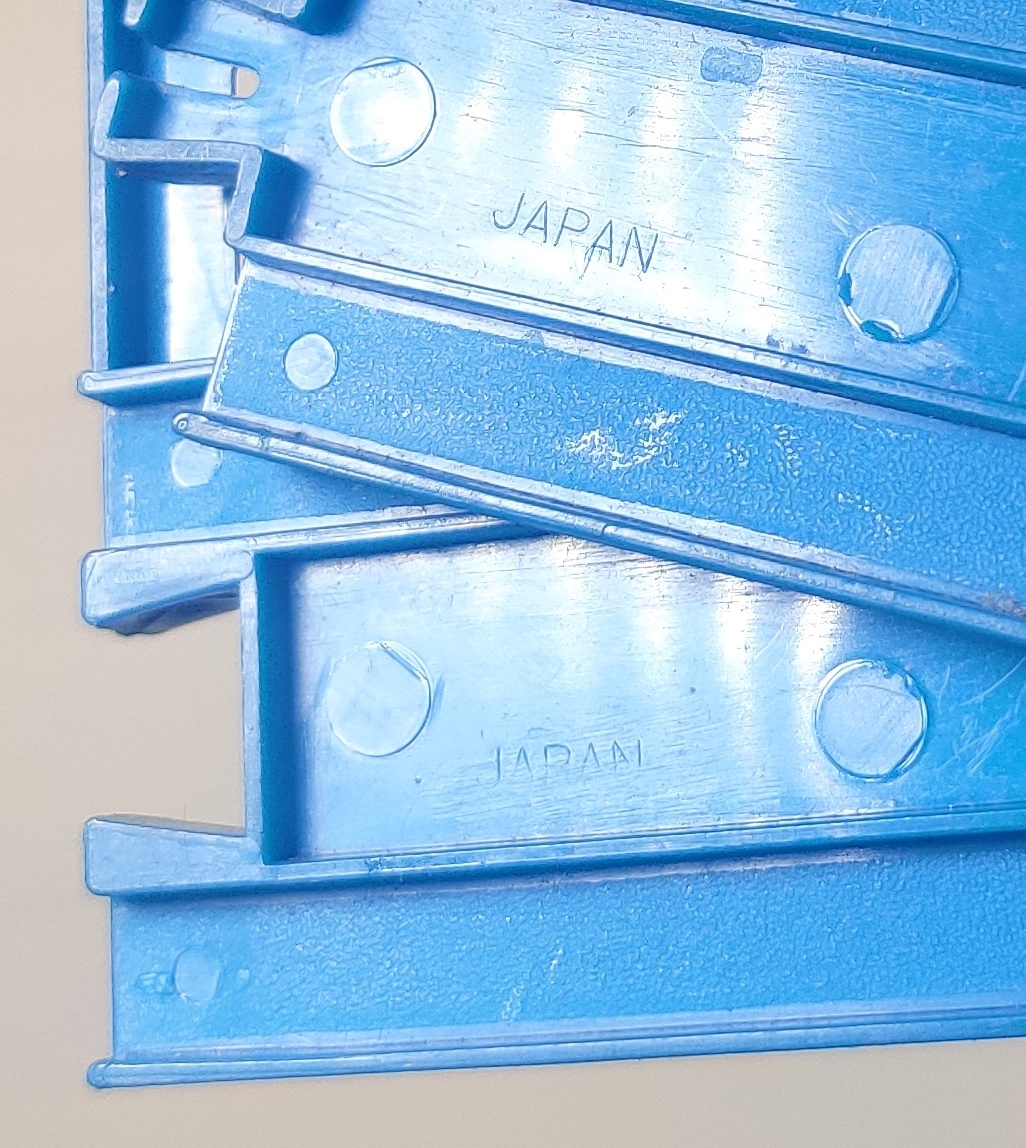
Around 1980 the single/double point rails were updated with JAPAN marks.
Around 1983 or 1984 the yellow directional decider rail was changed to the more solid yellow type. These rails continued to be used into the new power era.
Treaded rails (1990s)
In 1989 Tomy began producing Plarail in their Thailand factory, with Thailand-made single/double points appearing in the early 1990s. Early Thailand-produced Single/Double Point Rails are based on a Japan-era tooling with the Tomy Thailand text added over where the tooling previous said Japan. Rails were also marked with A or B near the entrance of the switch. These rails have tread added over the existing roughtop surface and have several patches where the roughtop bares through.
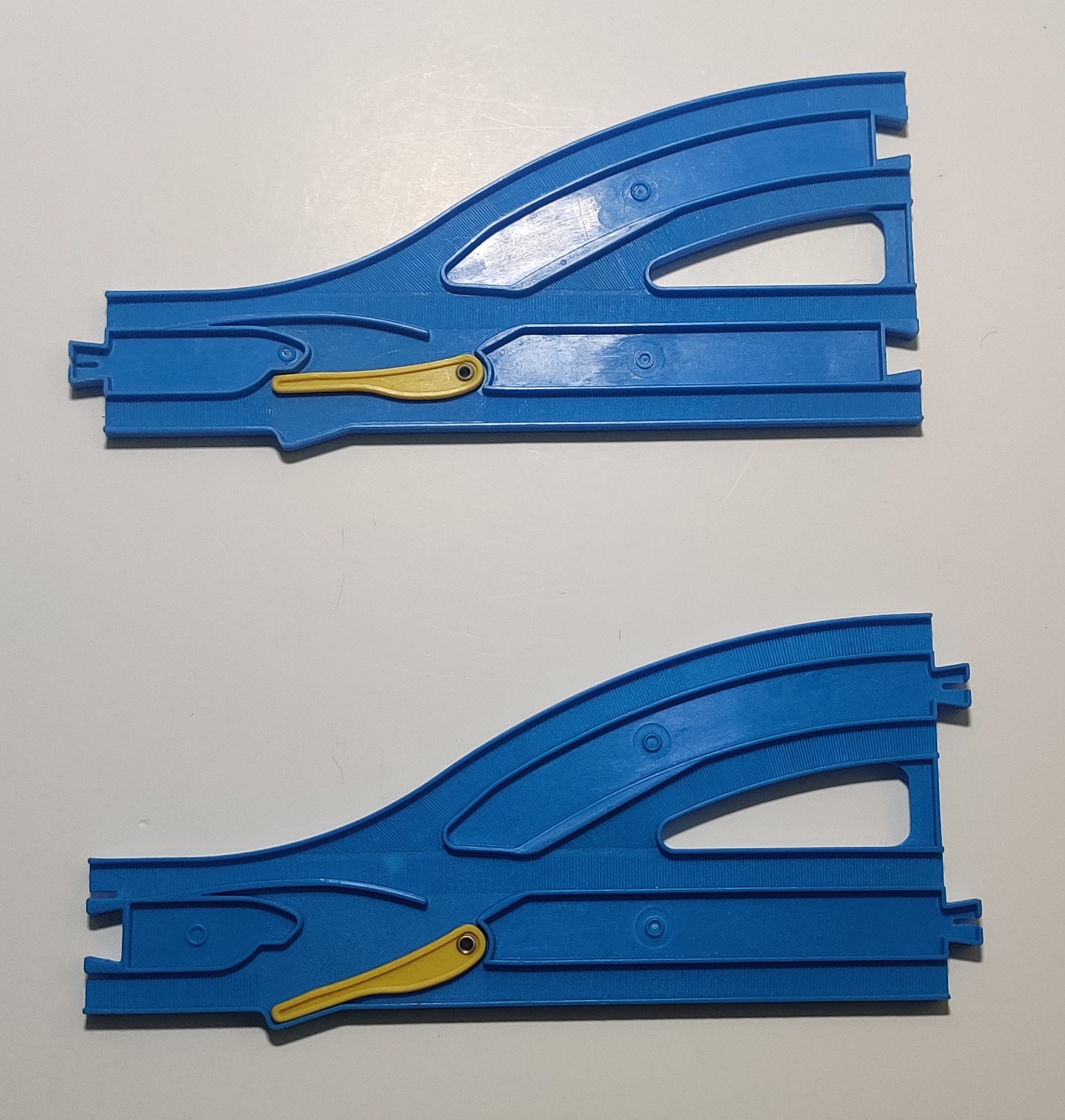
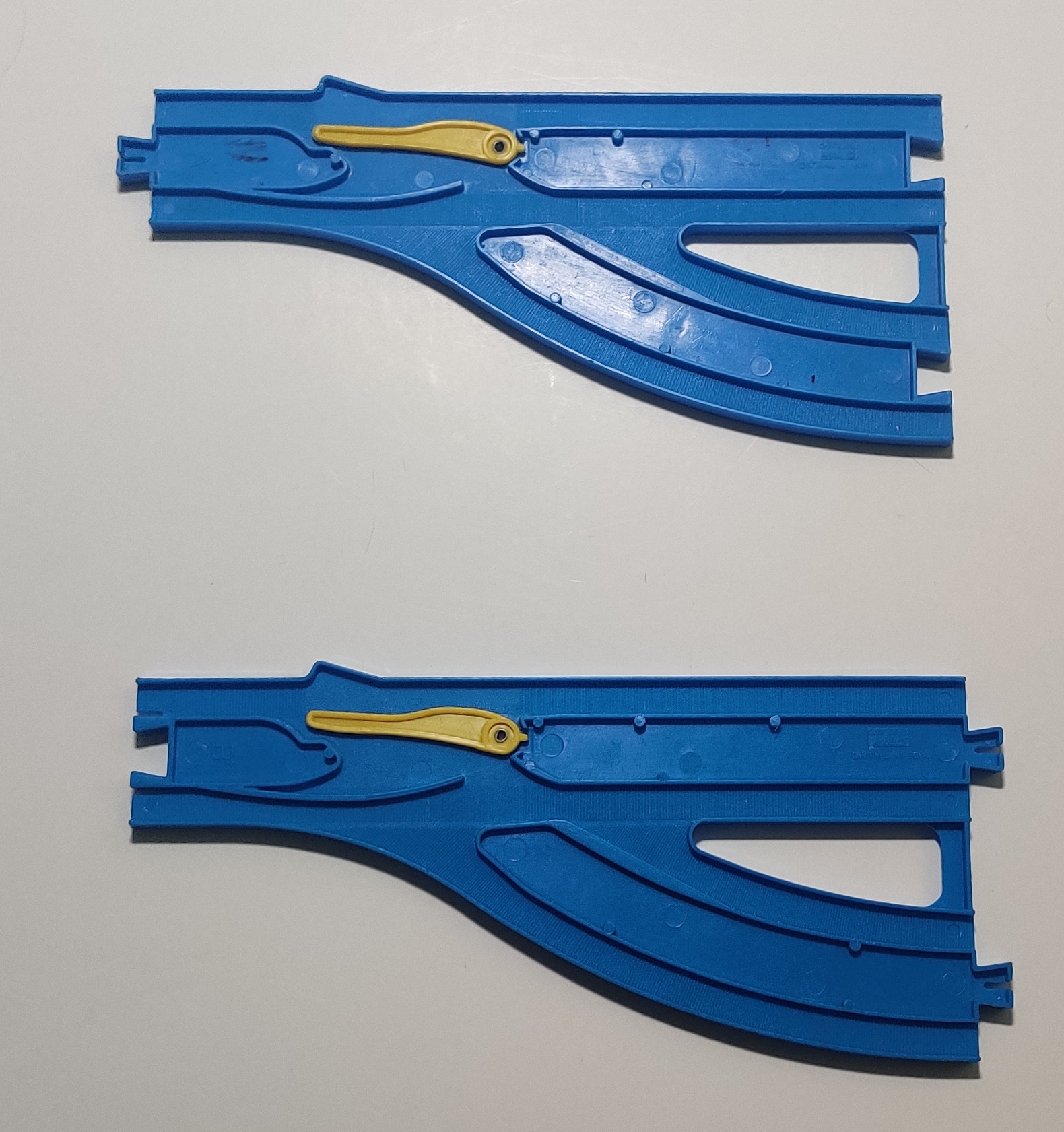
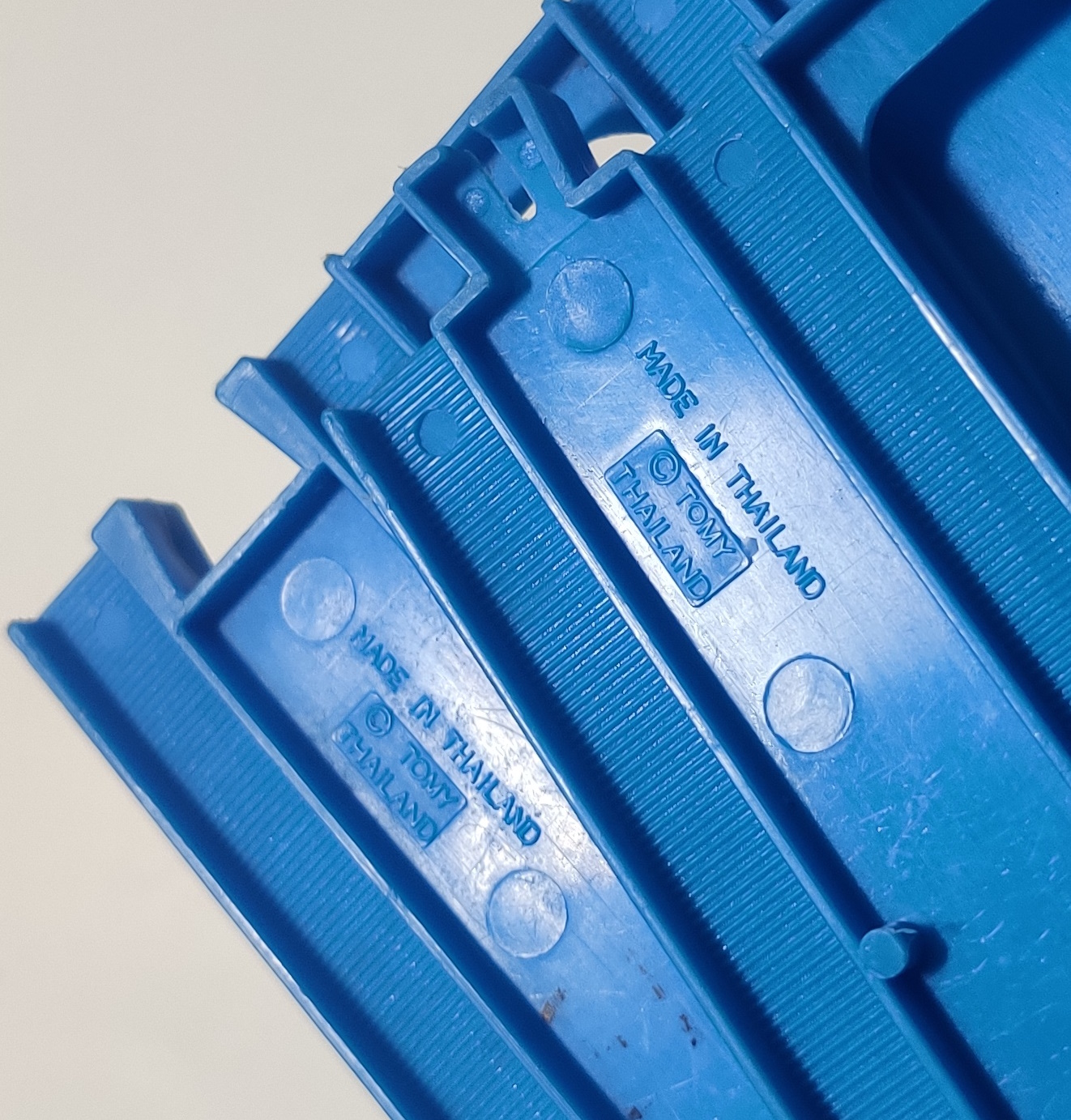
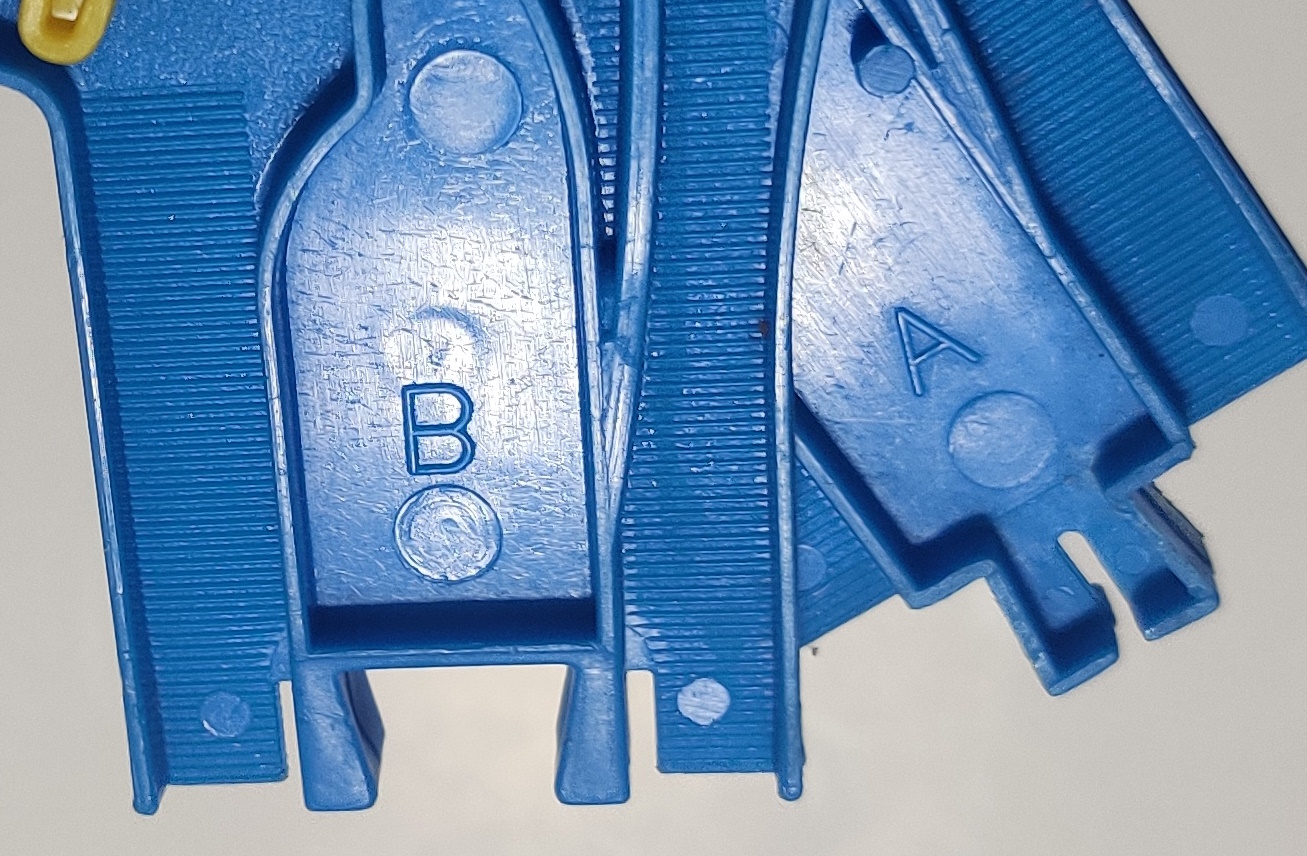
Around 1993 some track and other Plarail pieces were changed to also say "MADE IN THAILAND" in addition to Thailand, presumably because some regulations required the "made in" text as well as the country of origin. The A and B rails from around this time have slightly different support pip layouts.
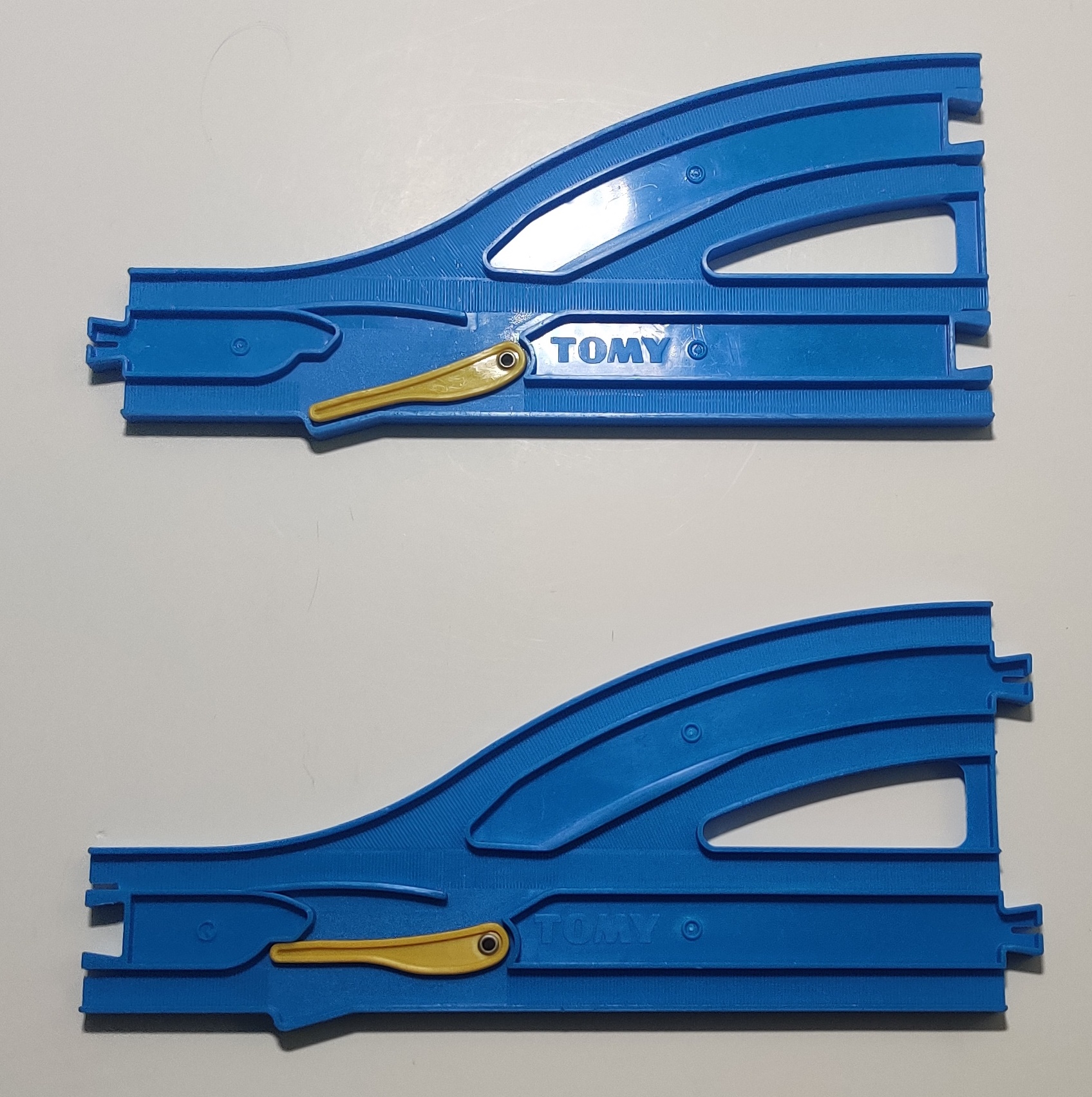
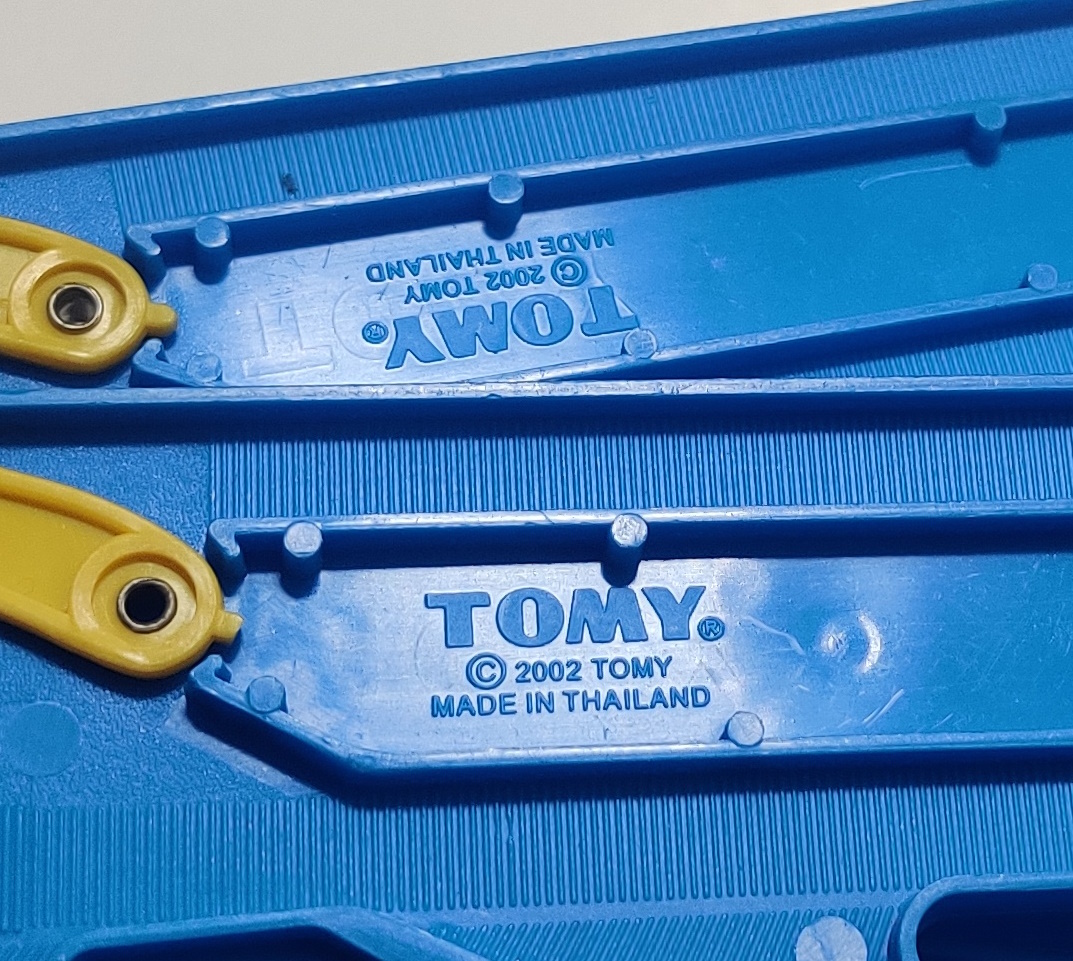
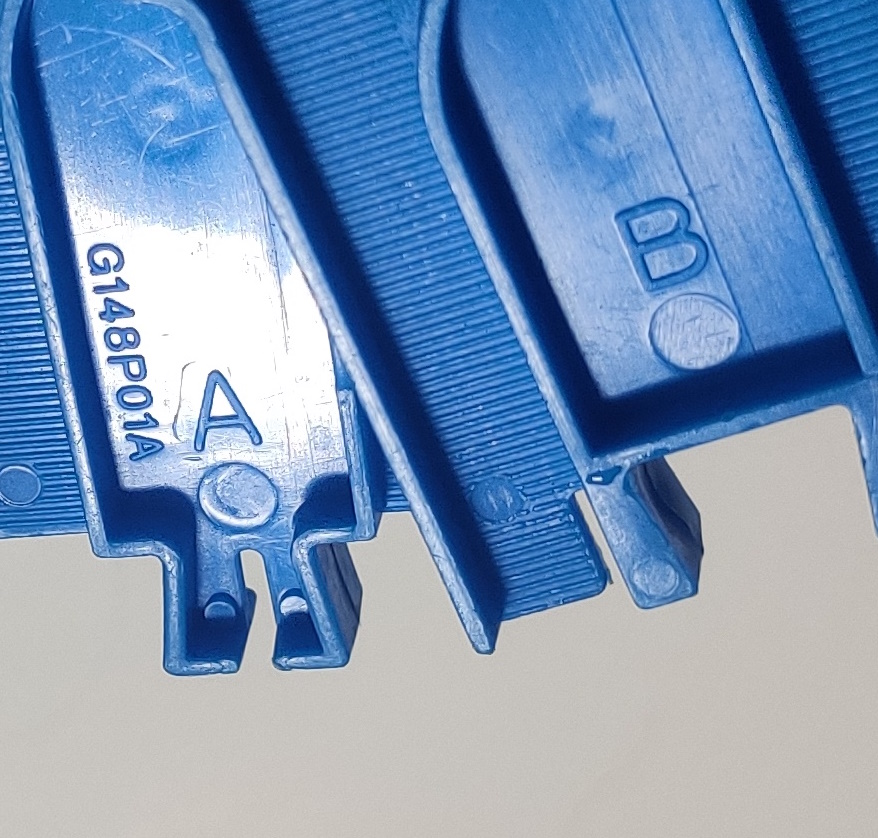
In the 2000s the Single/Double Track Point was updated with the new squared off Tomy logo on both the top and on the bottom alongside a 2002 date and made in Thailand info. This appears to be a "fresh" tooling with tread in most of the rail surface but roughtop around the directional decider, a compromise between the more grippy tread that seemingly cannot be applied under directional levers and the older all-roughtop type (some pure tread turnouts have smooth sections around the directional deciders, which offers no additional traction). Some later rails of this type have a production code on them.
| <-- R-12 Figure Eight Point Rail | R-14 Crossing Point Rail --> |
Y Type Single/Double Rail
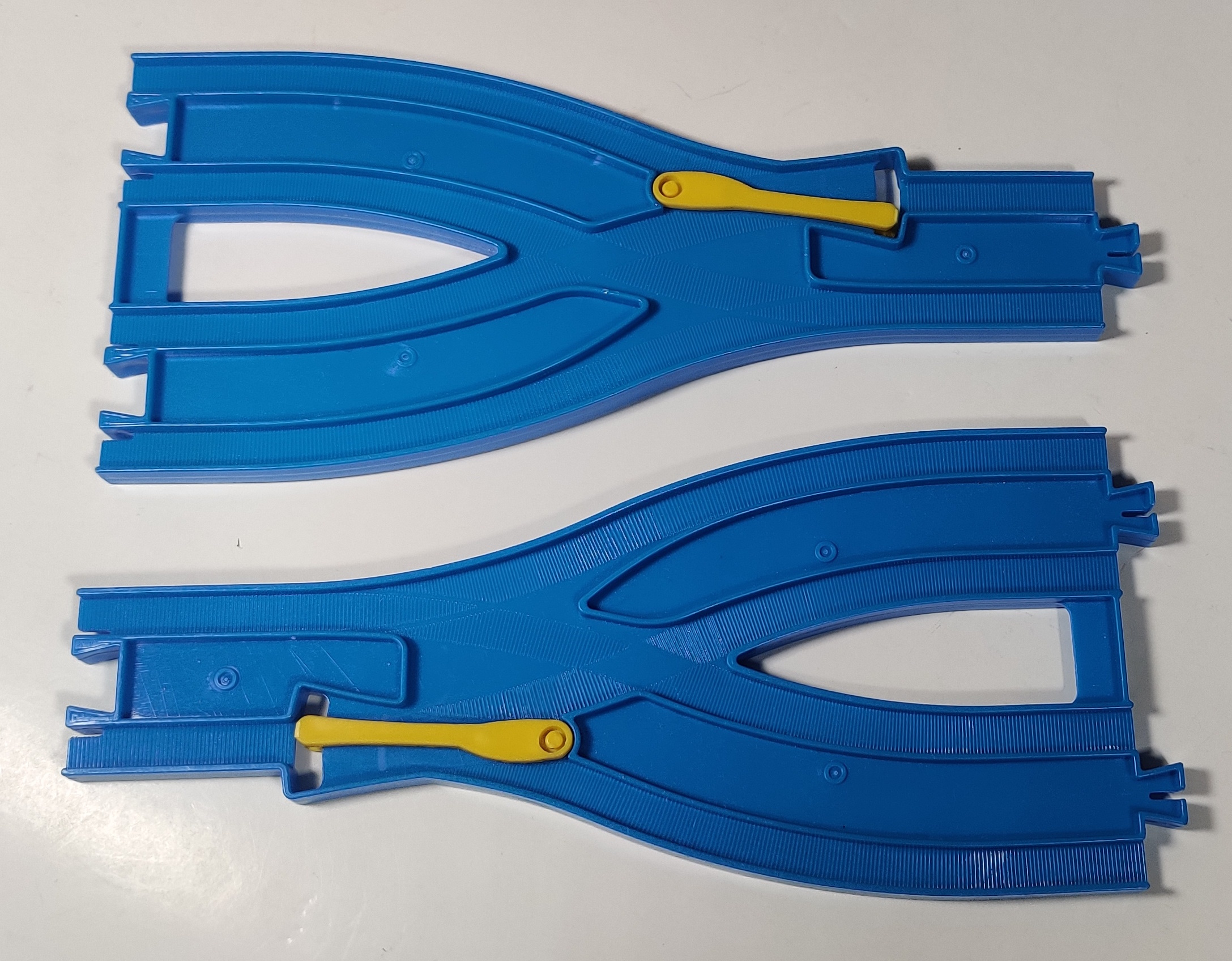
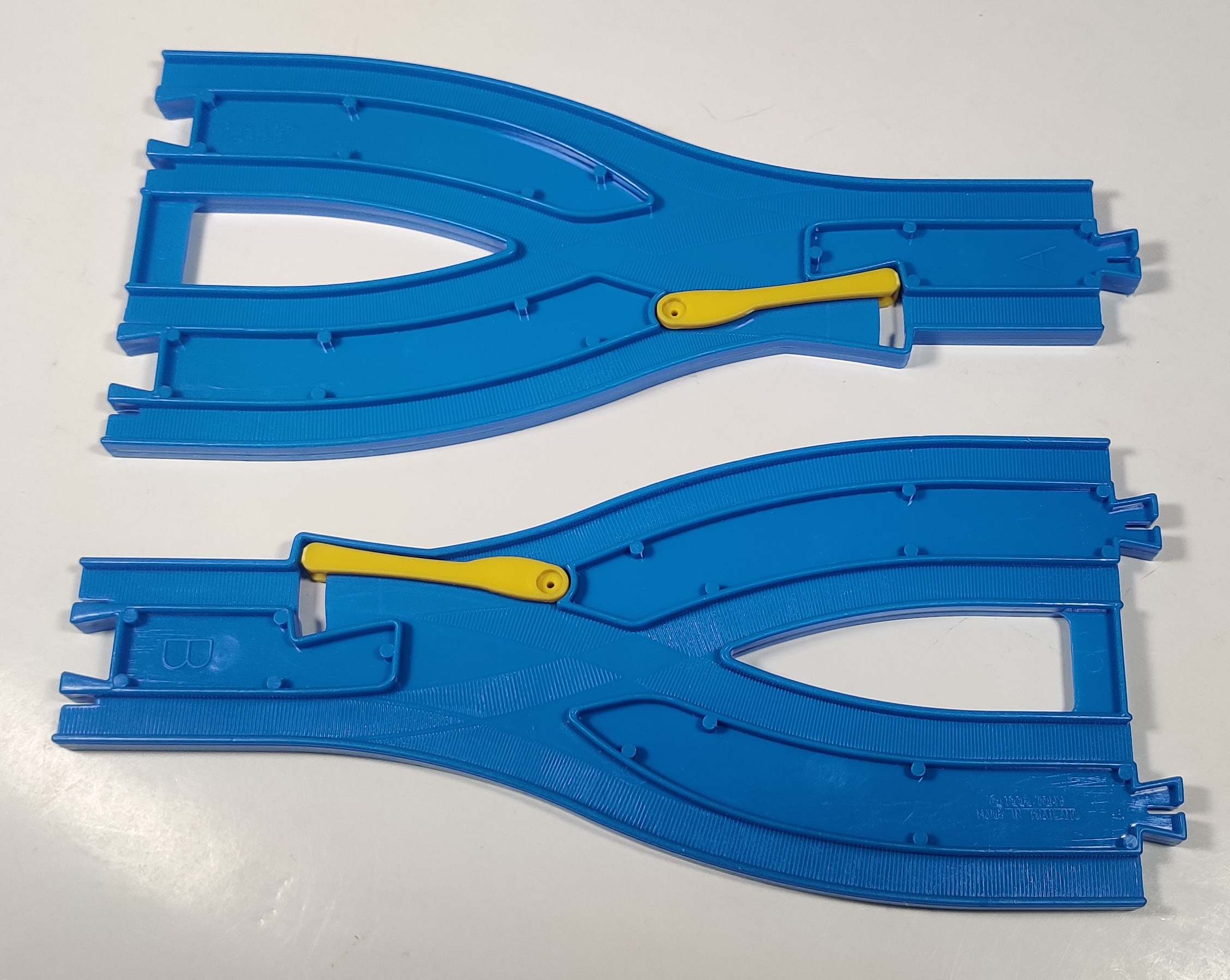
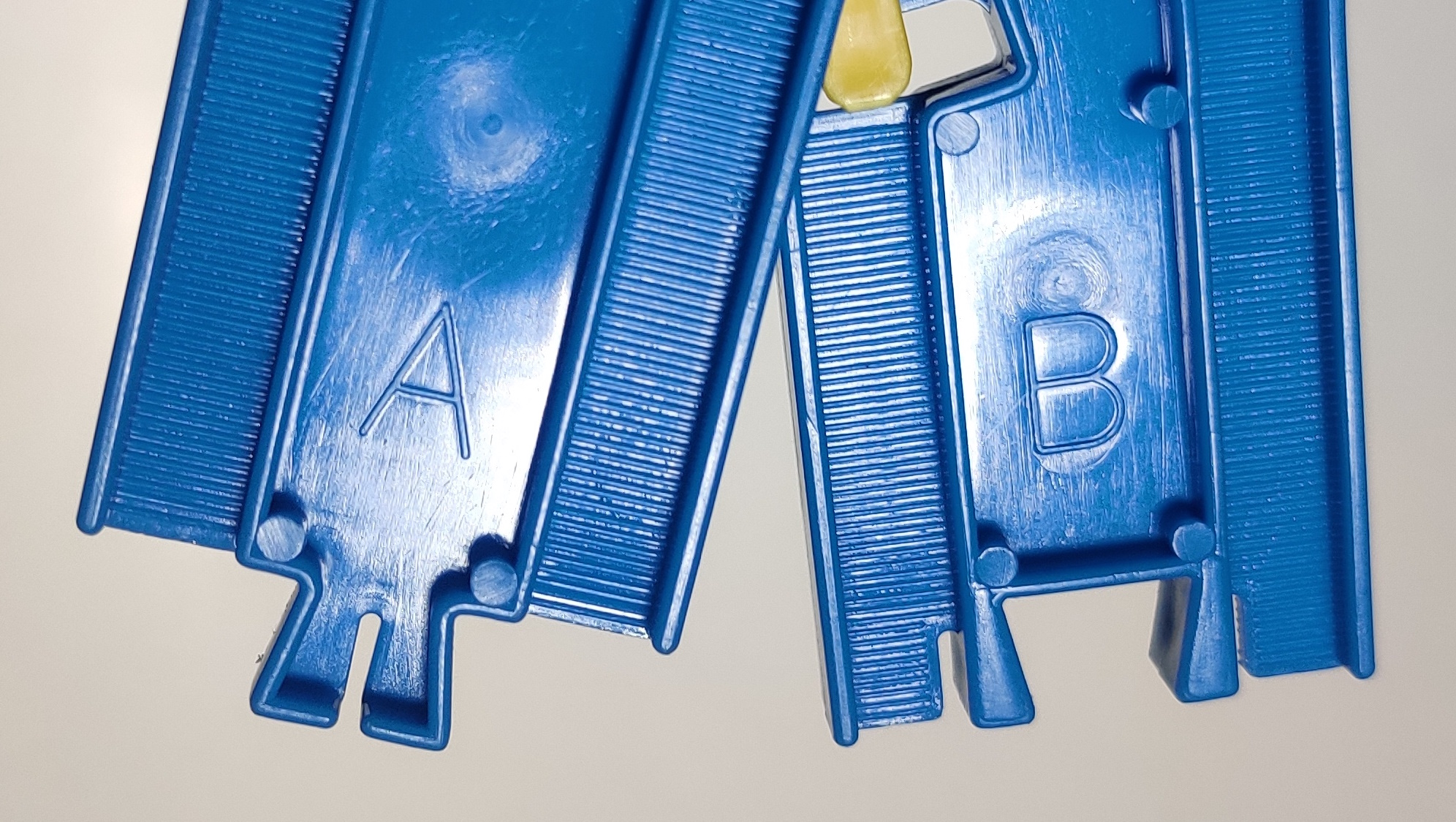
In the late 1990s a centered version of the single/double point rail was included in a handful of accessory sets. These rails have a centered entrance and leads to a double rail width of parallel outputs, which is uncommon in the modern Plarail rail standard. Like the regular rails, these come in A and B variations. Both types were included with Big Thomas in 1996 and its later rereleases including the export Thomas Giant Set with the switches also appearing in a handful of other sets.